- How to Find the Best Sopranino Saxophone - May 31, 2022
- How to Find the Best Contrabass Saxophone - May 30, 2022
- Trumpet Range Guide: Understanding The Entire Trumpet Range - May 19, 2022
Are you looking to learn a woodwind instrument, or is your kid about to go to band instrument selection day? You may want to have the flute vs. clarinet explained before you choose one.
Both instruments have pros and cons, and their differences can help you select which one to play. Then, you’ll enjoy making music, so you can look forward to practicing and getting better.
Bottom Line Up Front: The flute and clarinet are two woodwinds that couldn’t be any different. Flutes are in concert pitch and are made of metal, while clarinets are transposing instruments that use plastic or wood.
The Main Difference Between Flutes and Clarinets
The main differences between flutes and clarinets are:
- Flutes use an embouchure hole whereas clarinets use a reed and mouthpiece
- Flutes are transverse whereas clarinets are vertical
- Flutes are in concert pitch whereas clarinets are in a transposing key
- Flutes have closed or open holes whereas clarinets have open holes
- Flutes primarily use metal whereas clarinets use plastic or wood
These differences can help you choose the instrument for you.
Making a Sound
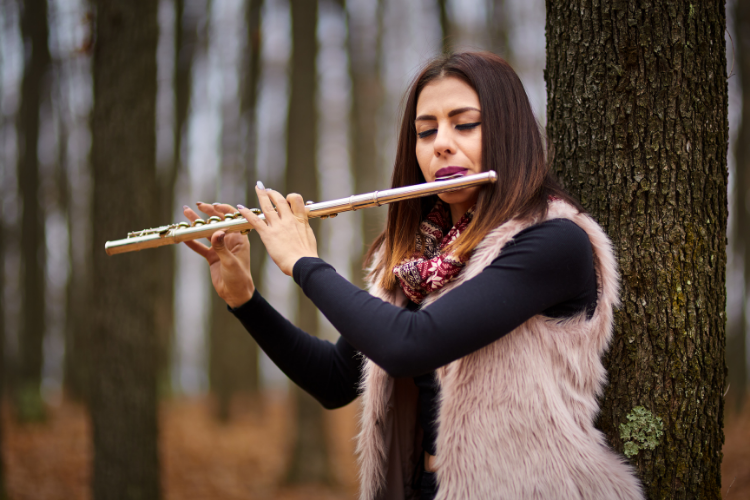
One of the most significant differences between the flute and clarinet is how you make a sound. They’re both woodwinds, so they both have keys up and down the body, but you blow into the instruments differently.
When playing the flute, you blow across an embouchure hole on the headjoint. You’ll form your lips like you would to blow across a soda bottle, and it can take a while to refine your lip placement to get the best sound.
However, the clarinet uses a mouthpiece and reed to produce a sound. You secure the reed against the mouthpiece with a ligature, place your lower lip over your teeth, and place the reed against your bottom lip then blow.
Playing Position
If you’ve ever watched a flute player and clarinet player, you’ve probably noticed how each holds their instrument. When playing the flute, you have to hold the instrument horizontally and off to the right side of your body.
Clarinet players hold the instrument vertically in front of their chests. That can be a bit more natural and easy to get used to when first learning the instrument.
No matter which you play, you’ll use a similar position when playing other members of each instrument family. For example, the piccolo is transverse, whereas the bass clarinet sits vertically in front of the player.
Transposition
When you play the flute, the note you see on a piece of sheet music is the same as what you’ll hear. The piccolo will sound an octave higher, while the bass flute sounds an octave lower.
On the other hand, all clarinets are transposing instruments in keys such as Bb or Eb. For example, the standard clarinet is in Bb, so it sounds a major second lower than written.
Now, there’s a small exception when it comes to the flute family. The alto flute is in the key of G, so it sounds a major fourth lower than written, but the flute you’ll play as a beginner is in concert pitch.
Key Design

Another visual difference between the instruments is the design of the keys. For one, flute keys are generally larger than clarinet keys when comparing flutes and clarinets of similar sizes.
However, beginner flutes and some professional models use closed-hole keys. That means you can place your finger anywhere on the key to close it to play the right note.
If you play the clarinet, all of the keys your first three fingers play will be open. Because of that, you need to have the right position to play the correct pitches.
The key design also causes a smaller difference regarding notes that share fingerings in different registers. Flutes jump register at the octave using faster air, whereas clarinets do so at an octave plus a fifth using a register key.
Materials
Take one look at a flute and clarinet, and you’ll probably see that each uses different materials. Flutes tend to use silver or silver plating, but gold and platinum are also common.
Clarinets, on the other hand, use plastic or ABS resin at the beginner level. More advanced models use grenadilla wood or some other type of wood.
Occasionally, you’ll see a wood flute, but those aren’t very popular. I’ve only met one flute player whose main instrument is wood and not some sort of metal.
Why Play the Flute
As a flutist, I could list dozens of reasons why you should play the flute. However, I’ll stick to reasons that make it a better choice than the clarinet.
I’ve played both instruments, but the advantages of the flute outweighed those of the clarinet, at least for me. You may have a different experience, and the clarinet could work better for you.
Still, you should know of a few advantages the flute has over the clarinet.
No Transposition Required
The flute is in concert pitch, which means you can play music for other concert pitch instruments easily. Maybe you want to learn a violin solo, or you like playing along to pop songs.
Doing so on a flute just requires you to read the notes. If you play the music on the piccolo or bass flute, you may need to transpose at the octave, but that’s a lot easier than playing notes a second above.
Of course, the alto flute is an exception, and transposing for it isn’t easy. But as a beginner, you don’t have to worry about the alto flute or having to transpose for it.
More Original Repertoire

Once you get better at the flute, you’ll want to learn some standard repertoire. And compared to the clarinet, the flute has quite a few more options.
The flute is one of the oldest musical instruments, and it has music from as far back as the 17th century. However, the clarinet only got its start in the 18th century.
That means if you want to play works by Bach, Telemann, or Vivaldi, the flute is your best bet. You can play that music on the clarinet, but you’d have to find a transcription for your instrument.
Less Painful
I’m the first to admit that the flute can cause pain, but for me, the pain from the clarinet is worse. The flute may cause some wrist or shoulder pain, but you can get over that with the proper hand position.
However, the clarinet can hurt your lower lip from having to protect the reed from your teeth. I built up some scar tissue, that I still occasionally notice years after not playing the clarinet regularly.
Also, at least for me, the clarinet hurt my right thumb. That thumb had to hold a lot of the weight of the instrument, and changing positions hardly did anything to relieve the discomfort.
Best Flutes to Try
If you want to test out the flute, you need to start on a good instrument. You can find a ton of cheap, low-quality models online, and they may work if you’re on a tight budget.
However, if you want to give playing the flute your best shot, you need a student flute from a reputable brand. There are quite a few decent models out there, so don’t overthink your purchase.
Here are a few of the best flute models for beginner players to try.
Yamaha YFL-222
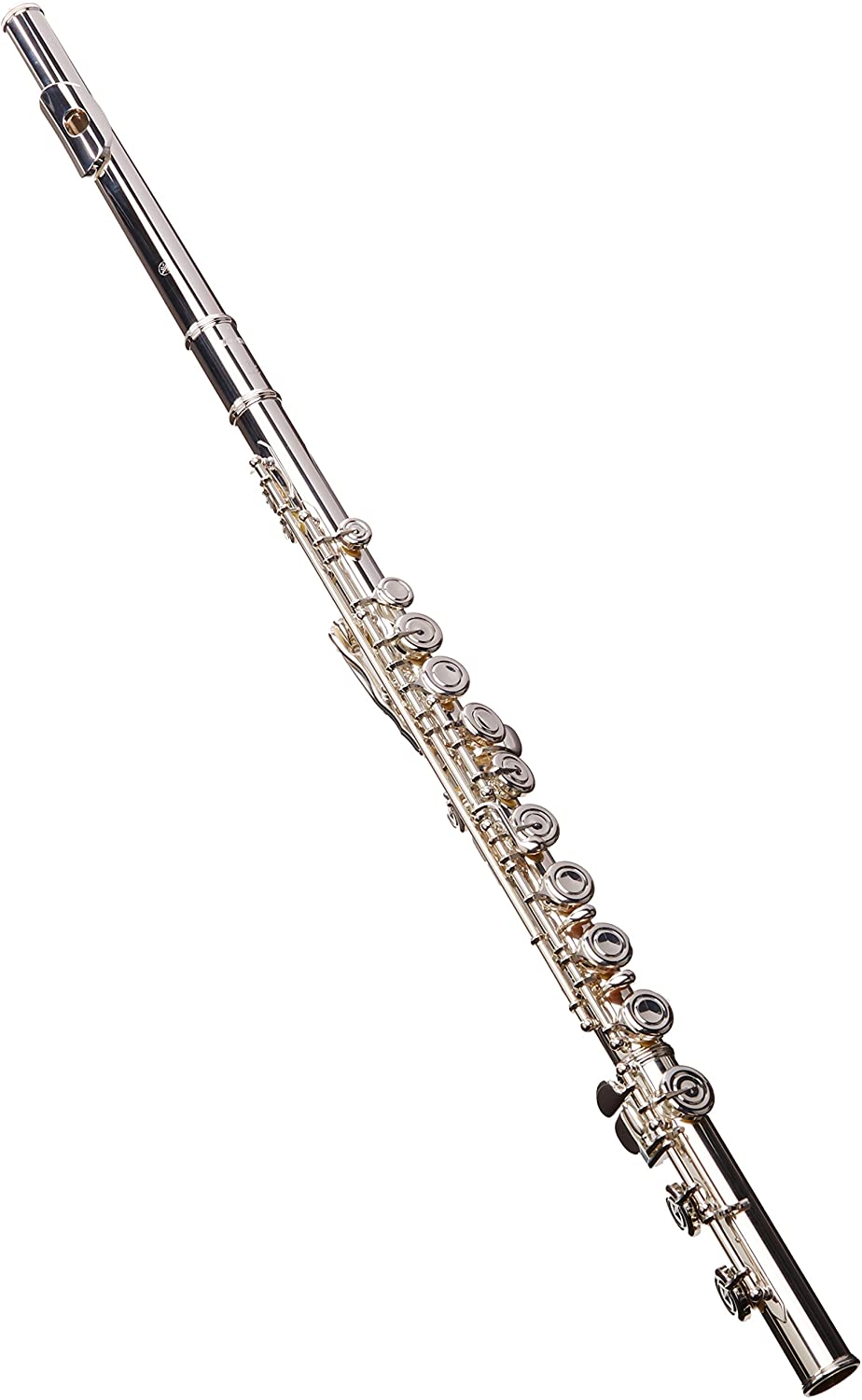
The Yamaha YFL-222 is probably the most popular beginner flute. Yamaha makes fantastic instruments at all levels, and the student models are no exception.
This flute is silver-plated and has closed-hole keys, so you can start playing relatively easily. It gets a great sound, especially once you learn how to make the right embouchure.
Yamaha flutes are also pretty durable, so you can take this to school or lessons. Then, you can learn the flute well and not worry about it constantly needing maintenance.
Pros
- Easy to play
- Good sound
- Nice quality
- Decent materials
- Suitable for younger students
Cons
- Risk of counterfeits
- Not the best for serious students
Trevor James 10x
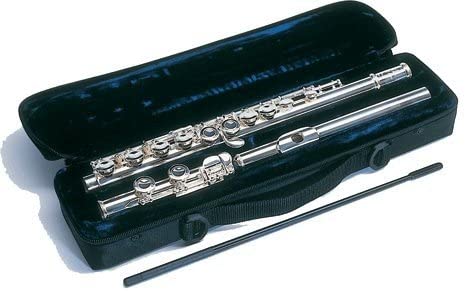
While I technically started on a cheap no-name flute, the Trevor James 10x was my first “real” flute model. It sounds amazing and is perfect for serious students who want something that will last longer than other beginner flutes.
If you have a young child looking to learn the flute, you can buy the 10xc model, which comes with a curved headjoint. That makes it easier for your child to reach the keys.
Like the Yamaha, this model uses silver plating and closed-hole keys. Plus, the flute comes in a case that secures the flute, even if the case is open, so there’s a lower risk of the flute falling out.
Pros
- Great for serious beginners
- Suitable for younger players
- Good materials
- Protective case
- Easy to play
Cons
- A bit expensive
- Not for everyone
Di Zhao 200
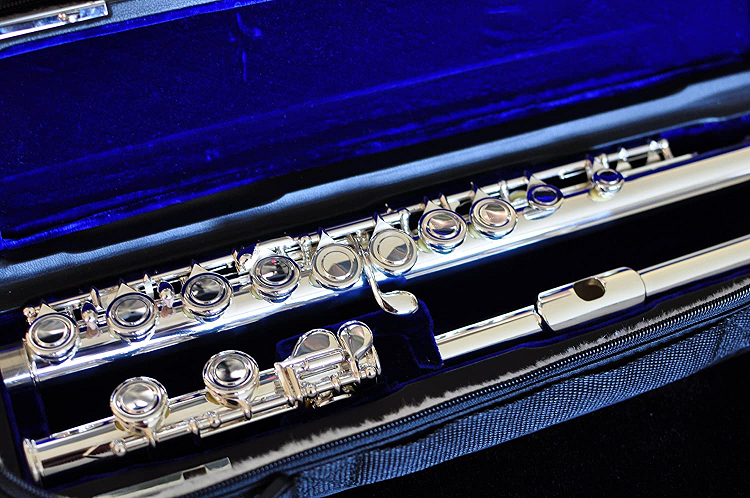
The Di Zhao 200 is another amazing beginner flute you should try. It features the same specs you find on other student models, such as silver plating and closed holes.
But this model features the same manufacturing process as more expensive Di Zhao flutes. It’s a great option for beginners who want something of great quality.
However, it’s not as expensive as some other beginner instruments. You’ll be able to get a good sound on the instrument, so you can learn more easily.
Pros
- Great for beginners
- Not too expensive
- Good quality
- From a flute-specific maker
- Nice sound
Cons
- Not the most affordable
- Hard to find used
Why Play the Clarinet
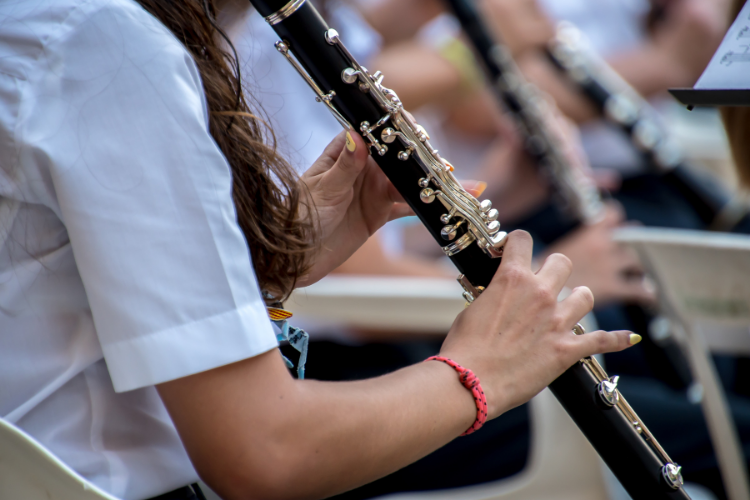
As much as I love playing the flute, I know it’s not for everyone, and it’s not perfect. The clarinet is an excellent alternative, especially if you want to play in an orchestra or wind band.
Before you choose which instrument to play, consider why the clarinet is a bit better than the flute. There are a few things that make the clarinet a more appealing choice for many musicians.
Here’s why you may want to learn the clarinet.
More Natural Position
Playing the clarinet, especially for long periods, is a lot less straining on your body than the flute. Since you hold the clarinet vertically in front of you, it’s very natural for your arms.
If you play the flute, you have to extend your left arm across your body. You also have to stretch your right arm out to be the correct distance to keep the instrument in place.
And sure, the clarinet can cause pain for your right thumb, but you can use a neck strap. That will take some of the pressure off so that you can practice for longer.
Easier for Beginners
Getting a sound out of the flute takes a lot of time, but you can get a sound out of the clarinet much sooner. As long as you wet your reed and put it with the mouthpiece correctly, you can get a sound.
You don’t need to form your lips in just the right way to get a note to come out of the instrument. Plus, you can start playing with the instrument from the beginning.
A lot of flute teachers make students start on the headjoint until they make a sound. If you think you might get bored of that, the clarinet may be a better choice for you.
More Band Demand
The clarinet might also be a better choice if you want to join a concert band or wind ensemble, which have slight differences themselves. In a concert band, there are three clarinet parts compared to two flute parts.
When playing in a smaller wind ensemble, clarinets are euphoniums usually double up on parts. Flutes and all the other instruments usually have one player per part.
In both ensembles, clarinet players have more opportunities to play auxiliary instruments. They can play the bass clarinet or even the Eb clarinet, while flute players can play the flute or piccolo.
Best Clarinets to Try
If the clarinet sounds like the instrument for you, it’s essential to buy a good instrument. Similar to flutes, clarinets can come in a range of build qualities.
The better your beginner clarinet is, the easier it will be to learn the basics. Then, you’ll have a better chance of wanting to continue playing so that you can improve your skills.
Before you buy the first clarinet you can find, consider the following models.
Yamaha YCL-255

The Yamaha YCL-255 is one of the most common beginner clarinet models. It’s a Bb clarinet, which is standard for the first clarinet that beginners play.
Like similar models, this one uses ABS resin for the body, so it’s a plastic instrument. That means you can play it inside and outside and not worry about it cracking.
The keys are nickel, which is also common among clarinets. You’ll also get a mouthpiece, so you just need to buy reeds to get your first notes out.
Pros
- Easy to play
- Good materials
- Comes with a mouthpiece
- Good for beginners
- Durable
Cons
- Somewhat expensive
- Not for all beginners
Jupiter JCL700NA

If you want something a bit more budget-friendly, the Jupiter JCL700NA might meet your needs. This clarinet uses ABS resin for the body, so you can play it almost anywhere.
Even though it’s not a wood model, you’ll be able to get a good sound. That makes this a good student model as well as a backup instrument for when you upgrade to something better.
The keys feature nickel plating to make them look and feel good to play. It’s a fantastic option for players who want to give the clarinet a try without overspending.
Pros
- Affordable
- Easy to play
- Nice materials
- Good construction
- Suitable for long-term use
Cons
- Not the best quality
Selmer CL301
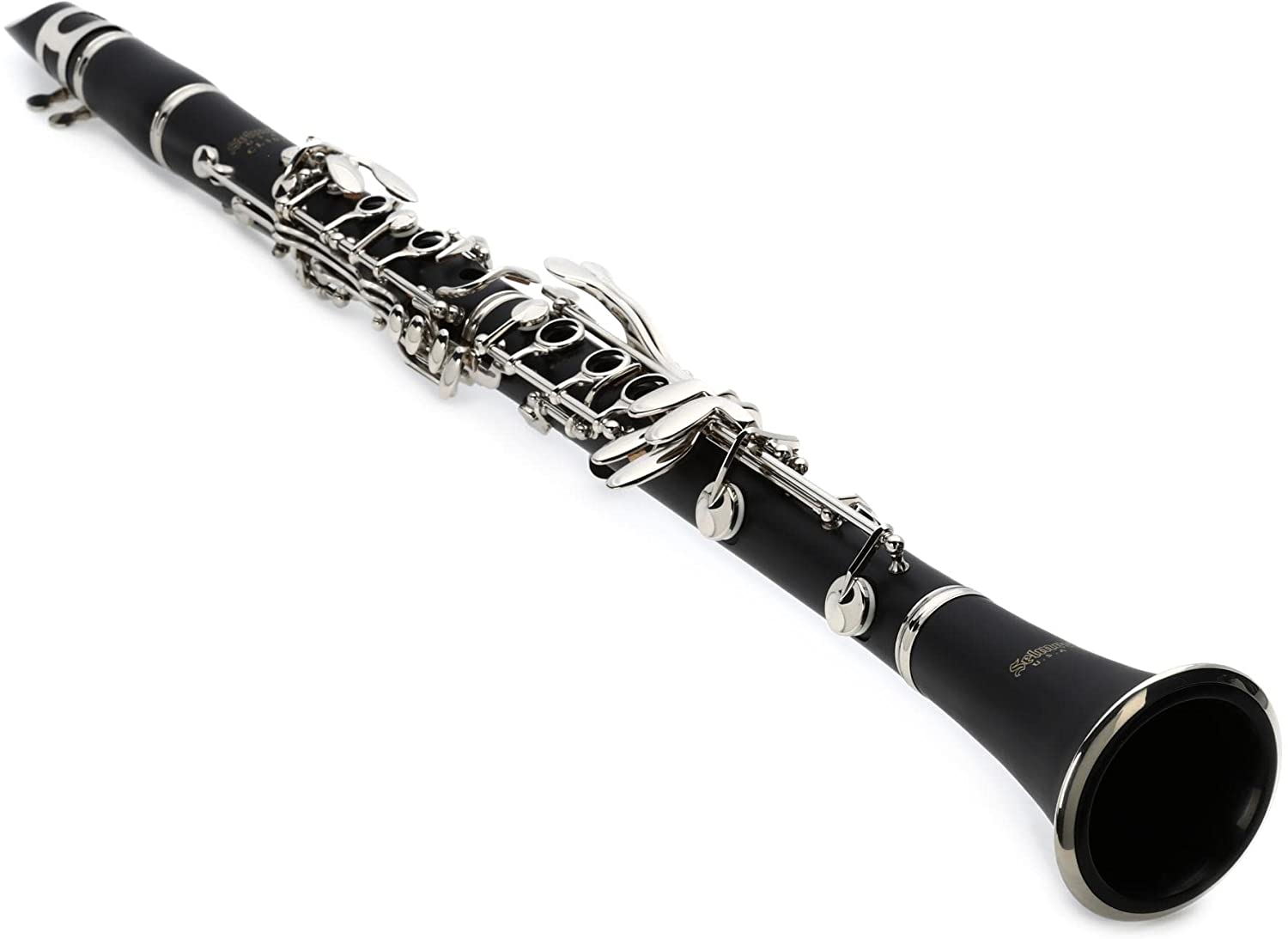
While I haven’t played the Selmer CL301, Selmer does own Bundy, which I have played. Selmer is a well-known clarinet brand, and the brand Selmer Paris makes some of the best professional models.
This instrument is great for beginners since it has a plastic body and nickel-plated keys. It’s pretty durable, so you can get a lot of use out of it as you learn the basics.
You’ll receive a case and mouthpiece, so you can protect your new instrument. All you need to buy in addition to the clarinet is some reeds to get started.
Pros
- Perfect for beginners
- Easy to play
- Nice materials
- Good quality
- Lasts a long time
Cons
- Expensive for what it is
FAQs about the Flute vs Clarinet Explained
Answer: The flute and clarinet both have easy and difficult aspects, so it’s hard to say which is easier. It can depend on you and your body because some players will find one easier to play.
I’ve played both, and I struggled to get a clear, consistent sound on the clarinet, but the flute was easy. However, plenty of musicians have the opposite experience.
Answer: Both instruments require some daily maintenance to stay in good condition. You should swab out the inside of the instrument and polish the keys and other metal parts.
However, wood clarinets require more maintenance. Be careful not to take them from one extreme temperature to another, and you should take them to a tech so that the professional can oil your instrument to keep the wood from drying out.
Answer: You can play the flute and clarinet, and plenty of people do. However, you should know that it will take more time to learn and maintain your skills if you play multiple instruments.
Also, you should start by learning one instrument. Once you master the basics on one, you can start to learn the other so that you can eventually play both well.
Answer: In the past, people believed you needed to have a specific lip shape and size to play the flute. However, anyone who wants to play the instrument can make it work.
If you want to play the flute, it will be easier to learn, even if you have to have an offset embouchure. I play off to the right, and I still sound as good as anyone else.
Final Note on the Flute vs Clarinet Explained
Having the flute vs. clarinet explained can help you decide which instrument you should play. The materials, playing position, and other factors can influence your decision.
However, you should still test out each instrument to know for sure if you like it. Find a flute and a clarinet near you to make sure you select the right instrument for you.
Looking for more interesting reading? Check out:

